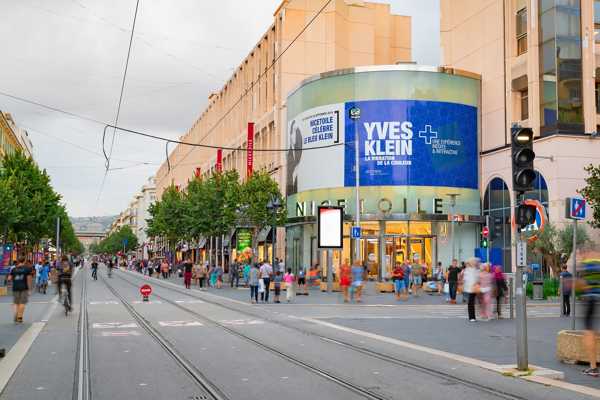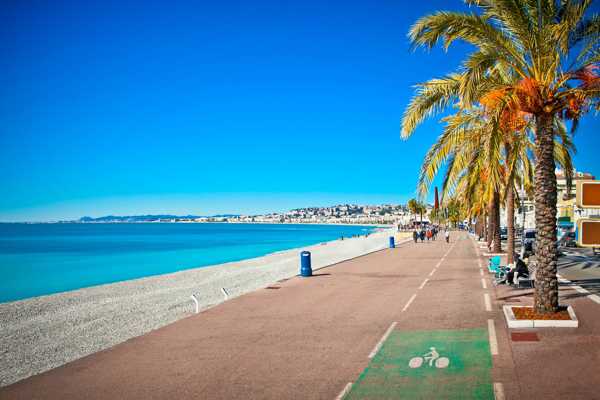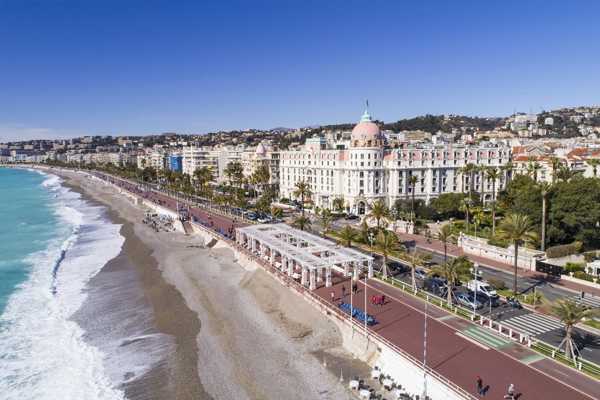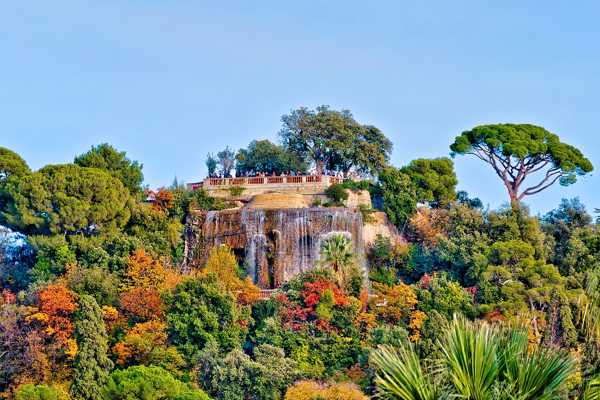Nice Old Town is a characterful district in the south of the city. It forms a triangle, hemmed in by the port to the east and Castle Hill to the west, where the Promenade des Anglais runs out. The glittering water of the Mediterranean lines its southern edge. To the north is the Promenade du Paillon. Once, this was a river, but a series of floods led successive city governments to order that it should be covered up. Today, it’s a beautiful park.
Tightly packed tenements line the narrow streets. Their ground floors are full of shops, restaurants, bars, museums and galleries. Above are residential apartments adorned with wrought iron balconies and brightly painted wooden shutters. You could argue that those living in the Vieille Ville, as it’s known, boast the best address in Nice. With neighbourhoods as charming as this, it certainly isn’t hard to see why many refer to the city as Nice La Belle (Nissa La Bella according to the local Niçois) – ‘Nice the Beautiful’.
Nice Old Town - one of the highlights of 12 Best Things to Do in Nice and 10 Best Places to Go Shopping in Nice (Read all about Nice here)
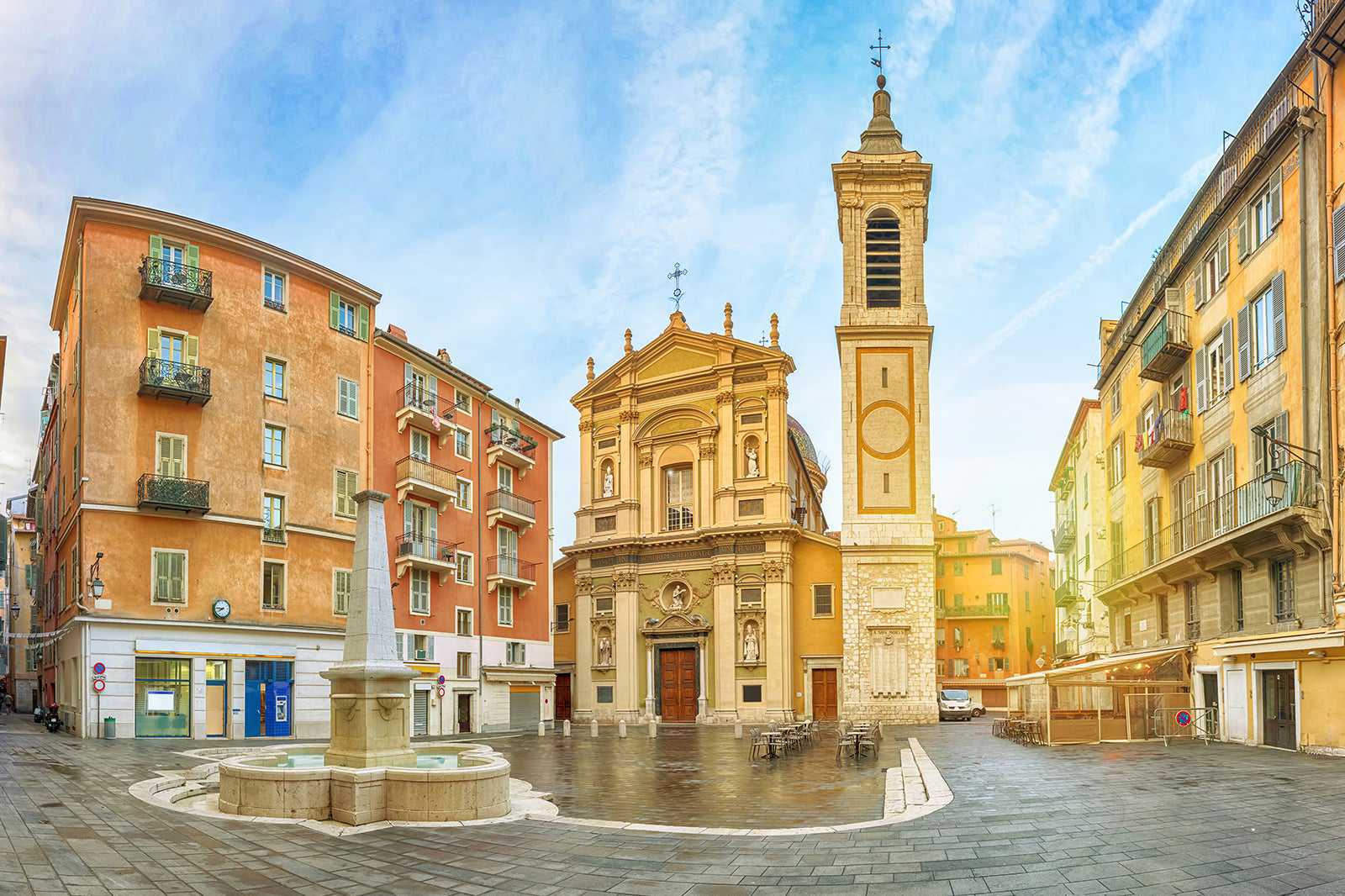
What to see and do in Nice Old Town?
Visitors come to see the many churches that litter the streets and squares of Old Nice. Among them is the Cathedral of Saint Reparata, which graces pretty Place Rossetti. Construction of this landmark religious building began in 1650, but it has been added to and altered many times over the years, most recently in 1949. The adjoining bell tower, for instance, is a 17th-century embellishment. Saint Reparata is the city’s patron saint and relics belonging to this 3rd-century martyr are interred in the cathedral.
Lascaris Palace also dates from the 17th century and was originally a mansion belonging to an aristocrat. Today, it's open to the public as a museum. The building houses an extensive collection of musical instruments, including vintage guitars, violins, harps and saxophones. A Niçois man called Antoine Gautier collected many of them. He lived in the city during the 19th century. When he died, he bequeathed his treasures to the city.
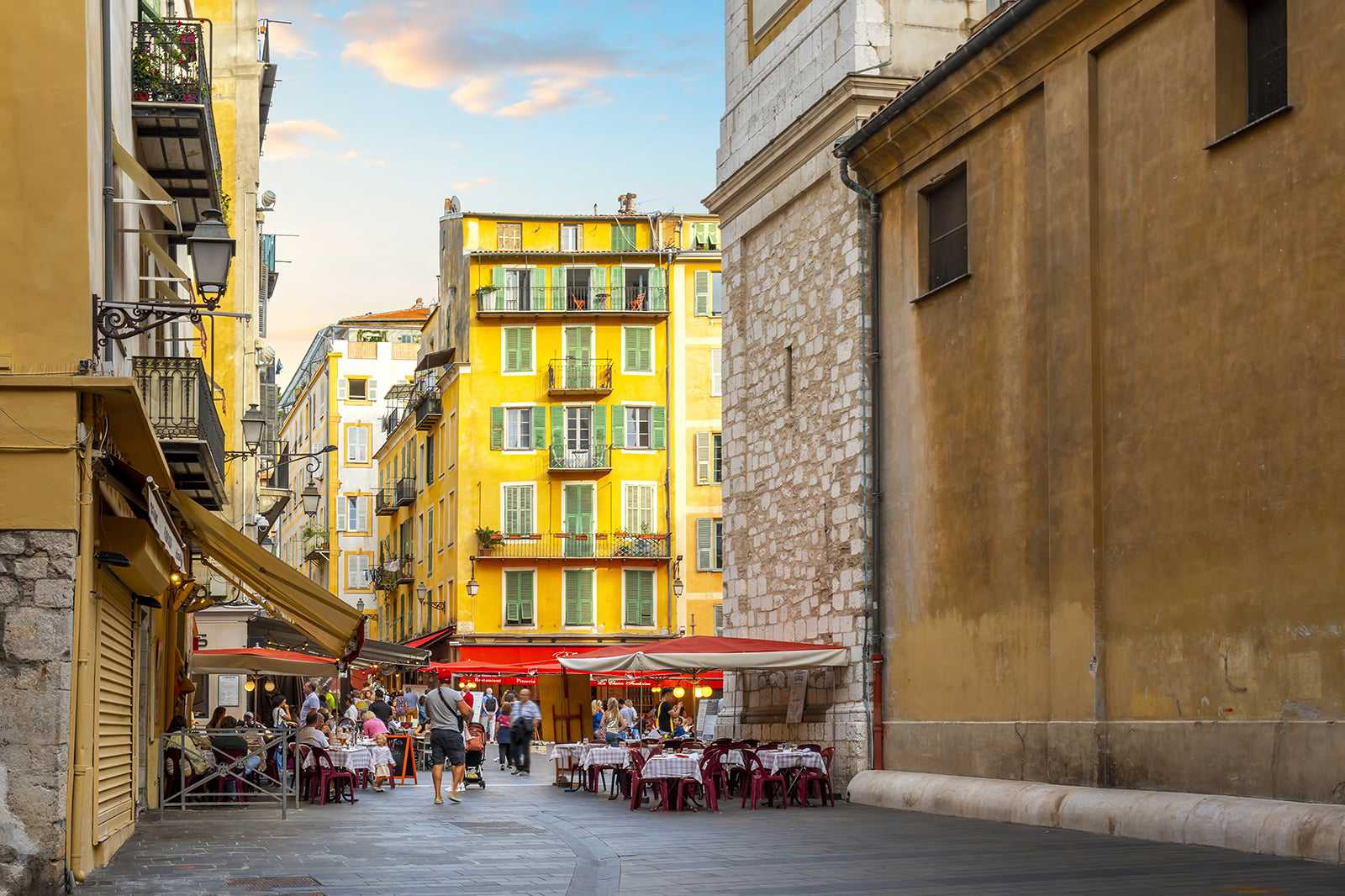
The Nice Opera house stages performances of opera, ballet and classical music. Built in the 1820s, it replaced an earlier wooden theatre. Statesmen and royalty, including Napoleon III and Tsar Alexander II of Russia, came here to watch talented composers such as Johann Strauss. But in 1881, a disaster struck – a devastating fire caused by a gas leak destroyed the building. A new theatre rose from the ashes; it opened with Giuseppe Verdi’s Aida opera in 4 acts. It holds historic monument status today.
Probably the most famous tourist attraction in Old Nice is the busy market held along the lively Cours Saleya. France's National Council for the Culinary Arts awards its special status. Each Monday, there’s a flea market in this important street, though that’s not the main attraction. Throughout the rest of the week, florists and horticulturalists sell colourful flowers beneath striped awnings. Alongside the flower market, traders pile stalls high with fruit and vegetables. There are as many locals buying ingredients for dinner as there are tourists soaking up the atmosphere.
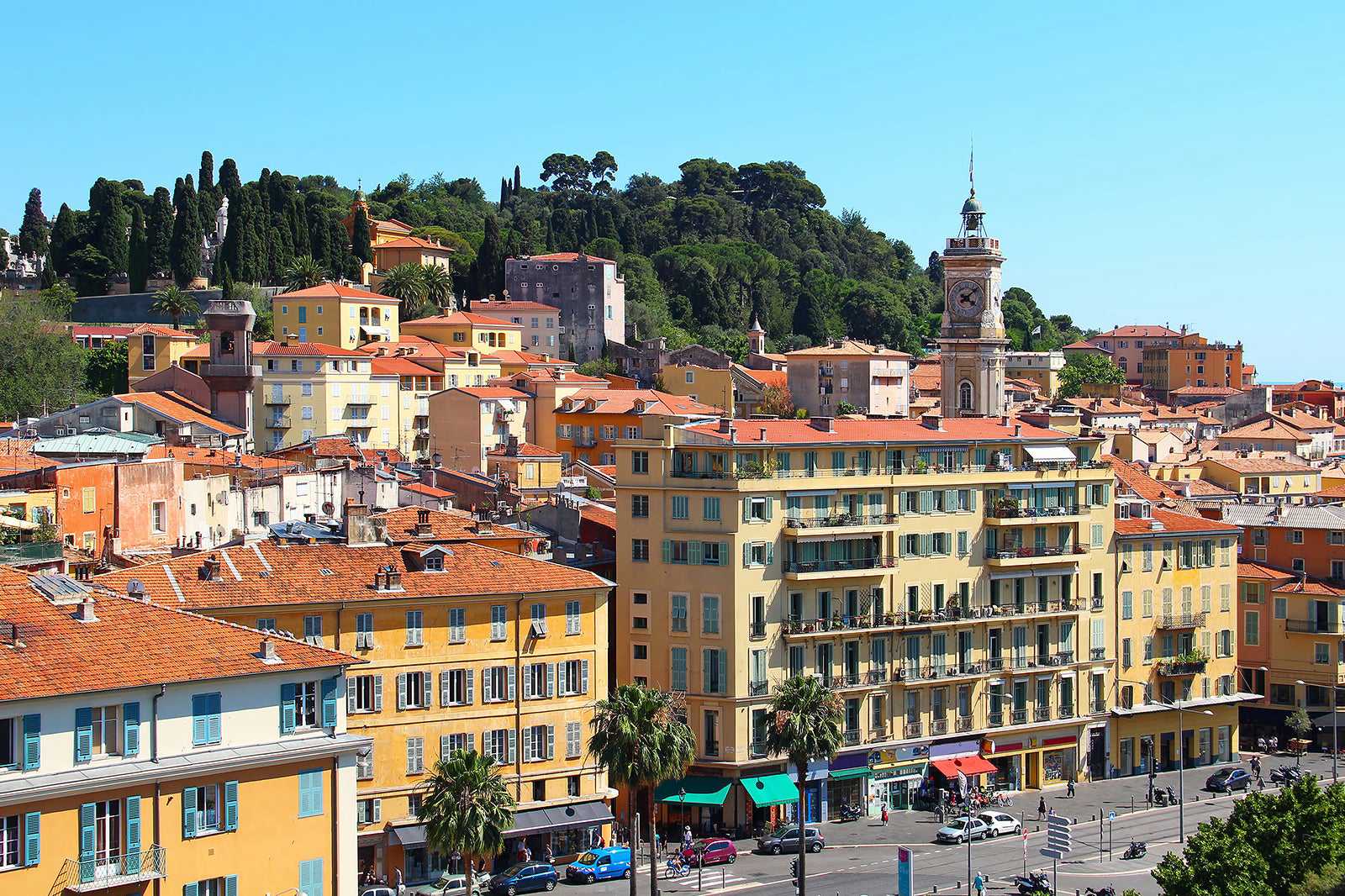
Good to know about Nice Old Town
Perhaps the most curious attraction in this part of the city is Castle Hill (Colline du Château). Despite its name, there is no longer a castle on this patch of high ground that overlooks Old Nice and the port. The castle was a casualty of a cannonball in 1706. It had taken quite some effort for the French monarch, Louis XIV, to capture it, so he ordered his soldiers to dismantle what was left. Much later, during World War II, the Germans dug a series of tunnels through the hill.
Today, its forested slopes contain 2 cemeteries, Jewish and Catholic. It’s a peaceful place, except at noon, when a cannon is fired, and in June when a 2-day festival turns this into the best party spot in town.
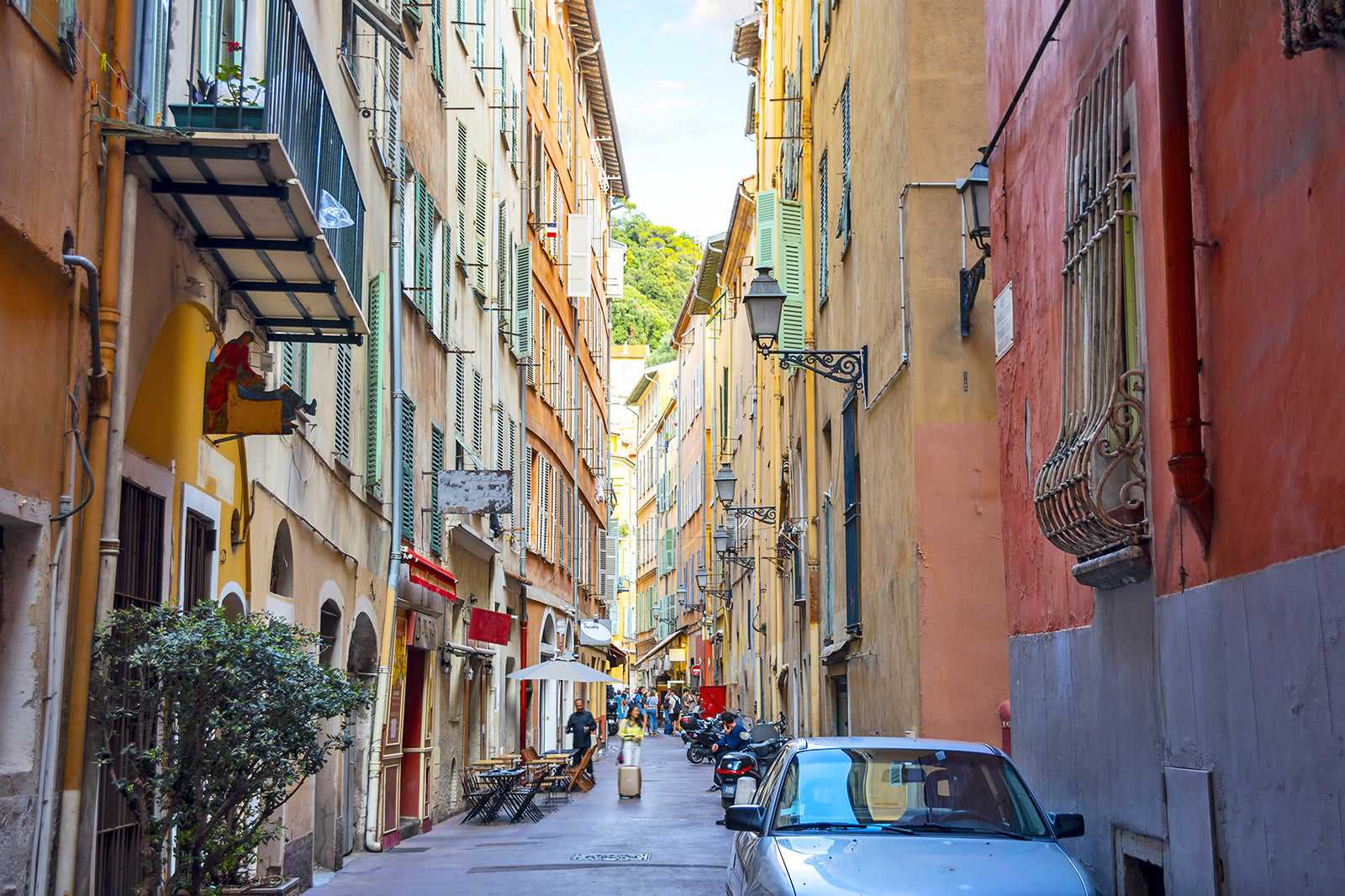
Nice Old Town
位置: Nice, France












